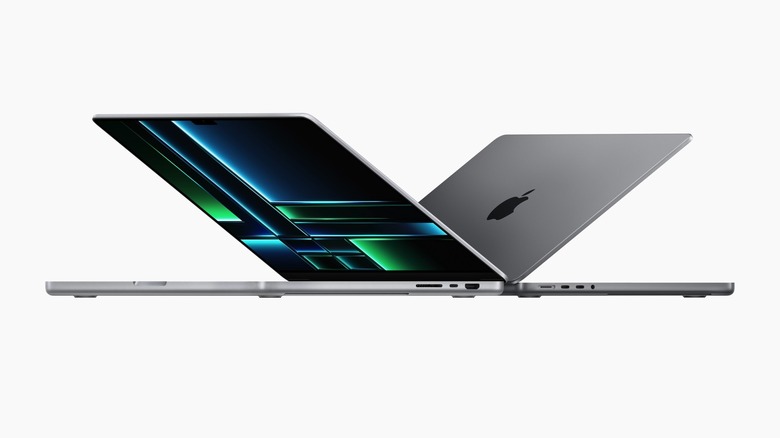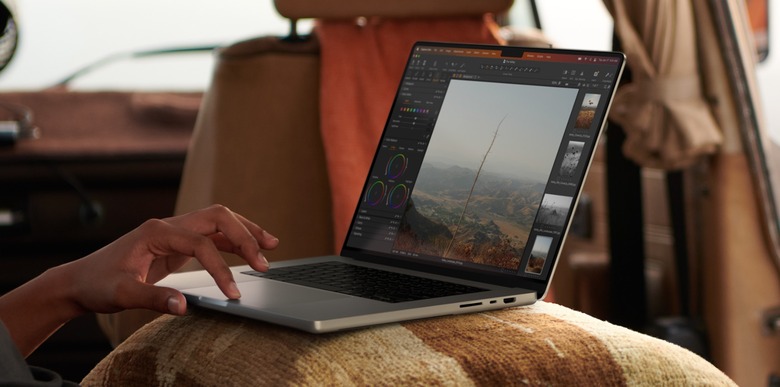Four Reasons To Buy The MacBook Pro With M2 Pro And M2 Max
Last week, Apple unveiled the new MacBook Pro with M2 Pro and M2 Max chips. Available in two sizes, this laptop is the second iteration of the redesigned MacBook Pro introduced in late 2021 with a better display, new look, more ports, and Apple's faster chips. Although the 2023 release may not be worth upgrading to for those who already have the previous generation, there are some nice improvements users should be looking forward to.
8K resolution support
When Apple introduced the 2021 MacBook Pro, one of the few complaints about this laptop was the HDMI 2.0 support. In 2023, the M2 Pro and M2 Max options now have an upgraded HDMI port that supports 8K displays up to 60Hz and 4K displays up to 240Hz.
That said, if you have a monitor supporting a higher refresh rate or want the best resolution possible, the new MacBook Pro with M2 Pro and M2 Max has you covered.
Up to 96GB of RAM
With the last generation, users could configure their M1 Max chip to up to 64GB of RAM, with the MacBook Pro with M2 Max, it's possible to get up to 96GB of RAM.
Apple says this unified memory "again pushes the limits of graphics memory in a laptop to enable intensive graphics workloads, such as creating scenes with extreme 3D geometry and textures, or merging massive photographic panoramas."
M2 Max has a next-gen 12-core CPU with up to eight high-performance and four high-efficiency cores that deliver up to 20 percent greater performance over M1 Max, and a more powerful media engine than M2 Pro, with twice the ProRes acceleration to speed up media playback and transcoding dramatically.
MacBook Pro with M2 Pro and M2 Max has the longest battery life in a MacBook
Apple has been praised for its powerful chips and improved battery life thanks to its own silicon. What was good with the last iteration got better with the MacBook Pro with M2 Pro and M2 Max chips.
The Cupertino firm says the 14-inch model can last up to 18 hours of Apple TV app movie playback, while the 16-inch model can hold up to 22 hours. Compared to the previous generation, Apple brought even more power with longer battery life in both models.
M2 Pro and M2 Max chips show Apple is not joking around
Built using a second-generation 5-nanometer process technology, M2 Pro consists of 40 billion transistors — nearly 20 percent more than M1 Pro and double the amount in M2. It features 200GB/s of unified memory bandwidth — twice that of M2 — and up to 32GB of low-latency unified memory. The next-generation 10- or 12-core CPU consists of up to eight high-performance cores and four high-efficiency cores, resulting in multithreaded CPU performance up to 20 percent faster than the 10-core CPU in M1 Pro.
The GPU in M2 Pro can be configured with up to 19 cores — three more than the GPU in M1 Pro — and includes a larger L2 cache. Graphics speeds are up to 30 percent faster than M1 Pro, resulting in considerable increases in image processing performance and enabling console-quality gaming.
The M2 Max is built with 67 billion transistors — 10 billion more than the M1 Max and more than 3x that of the M2. Its 400GB/s of unified memory bandwidth is twice that of M2 Pro, 4x that of M2, and supports up to 96GB of fast unified memory.
M2 Max features the same next-generation 12-core CPU as M2 Pro. The GPU is even more powerful, with up to 38 cores, and is paired with a larger L2 cache. Graphics speeds climb up to 30 percent faster than M1 Max.

